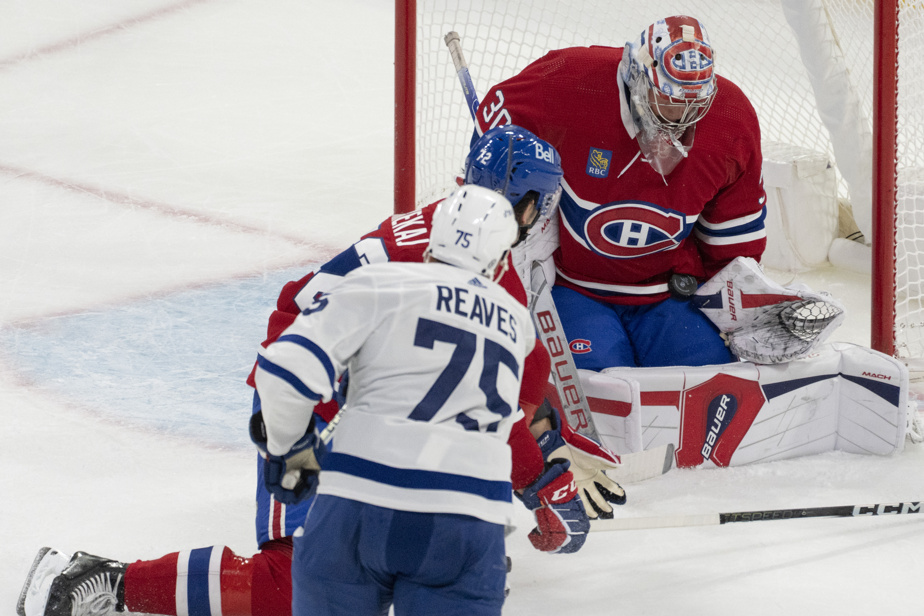It’s now official: the Canadian will begin his season with a menage a trois in front of the net.
With Cayden Primeau landing a job to start the season, Jake Allen and Samuel Montembeault will have to share the net with the 24-year-old American.
Tense during his meetings with the media since the start of camp, it was a seemingly more zen Primeau who awaited the journalists Monday in the locker room. “It won’t be easy, but I’m looking forward to the challenge,” he said.
Thanks to decent performances in camp, but also thanks to an evolution in his status which means that he must now be placed on waivers to be transferred to Laval, Primeau forced the Habs to opt for a triumvirate in front of the net.
At training on Monday, Primeau, Allen and Montembeault therefore worked in rotation: while two goalkeepers practiced with the rest of the team on one of the rinks at the training center, the third went to join coach Éric Raymond to a personalized session of around fifteen minutes.
“We don’t do all the exercises with the team, but it allows us to work on more technical things with the goalie coach,” noted Montembeault.
“These are mainly technical elements. It helps you stay active and it’s important to stay active, because if you’re on break for too long, you get cold and that’s when injuries can occur,” added Primeau.
Adjustment for coaches
Martin St-Louis seemed reluctant to discuss the situation. “I know it will be a juggle. That’s another question for Kent [Hughes] », he first replied. [NDLR : Hughes n’était pas disponible pour rencontrer les médias lundi. ]
What about the logistics of a training session? “I’ve never done that, I’ll have to get used to it,” added the CH coach.
David Marcoux went through this during his ten years as goalie coach in the NHL. He notably experienced it during his first season with the Calgary Flames, in 2003-2004.
“We started the year with Roman Turek and Jamie McLennan,” remembers the man who now works for the Calgary International Hockey Academy, a school program. Dany Sabourin was recalled, we had three for a while. And in November, with McLennan’s performances declining, we sought out Miikka Kiprusoff, who was injured quickly. So Sabourin came back to plug the holes! »
Marcoux is clear: a three-goalkeeper regime must be a temporary solution. “It’s short-term, and order must be very well established,” he warns, in an interview with The Press. If it is established that Montembeault is the no 1, it should be clear that he takes the shots he needs on game mornings, and the other two take what’s left. On the other hand, this is where it becomes fun for the coaches, because once the starting goalkeeper returns to the locker room, you still have a goalkeeper on each side for your exercises. »
Marcoux was lucky, because Kiprusoff had not yet become one of the busiest goaltenders in the NHL during the 2003-2004 season. After the lockout, however, the legendary Finn started an average of 75 games (!) over the next four seasons.
“Now, many teams split work 60-40 between goalies. So personnel management is perhaps easier now,” believes the Quebecer.
Another factor that helps: arenas and training centers which have two ice rinks, like that of the Canadiens, which allows the rotation described above. “We couldn’t do that because the Saddledome just had a rink. It was the same in Carolina. » Several newer arenas, including those in Detroit, Columbus, Newark and Edmonton, have a secondary rink which helps to better direct traffic.
An injury or a trade will put an end to the experience. In the meantime, it will be interesting to see how Montreal handles the Three Musketeers. The lighter schedule at the start of the season – only four games in the first two weeks – does not exactly appear ideal under the circumstances.
